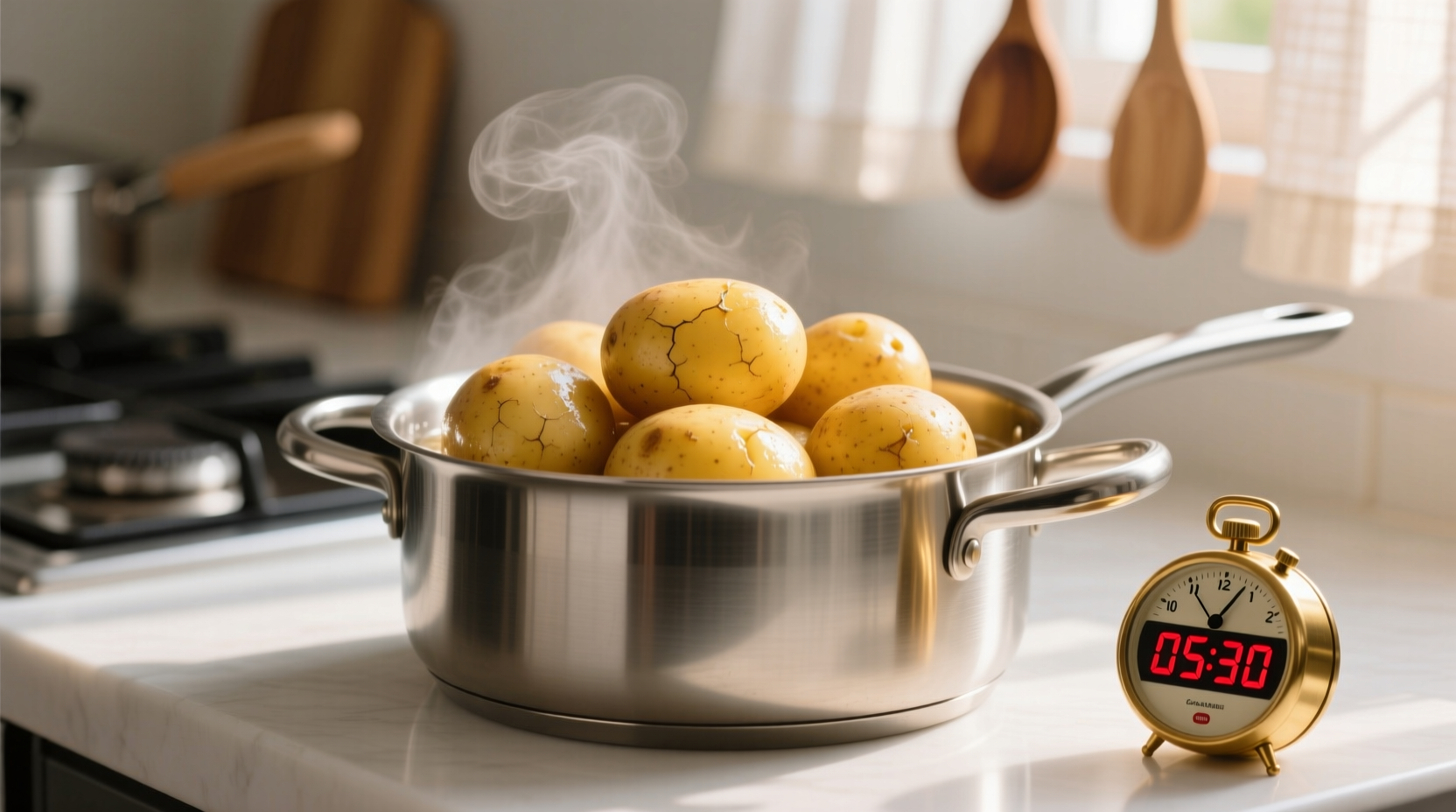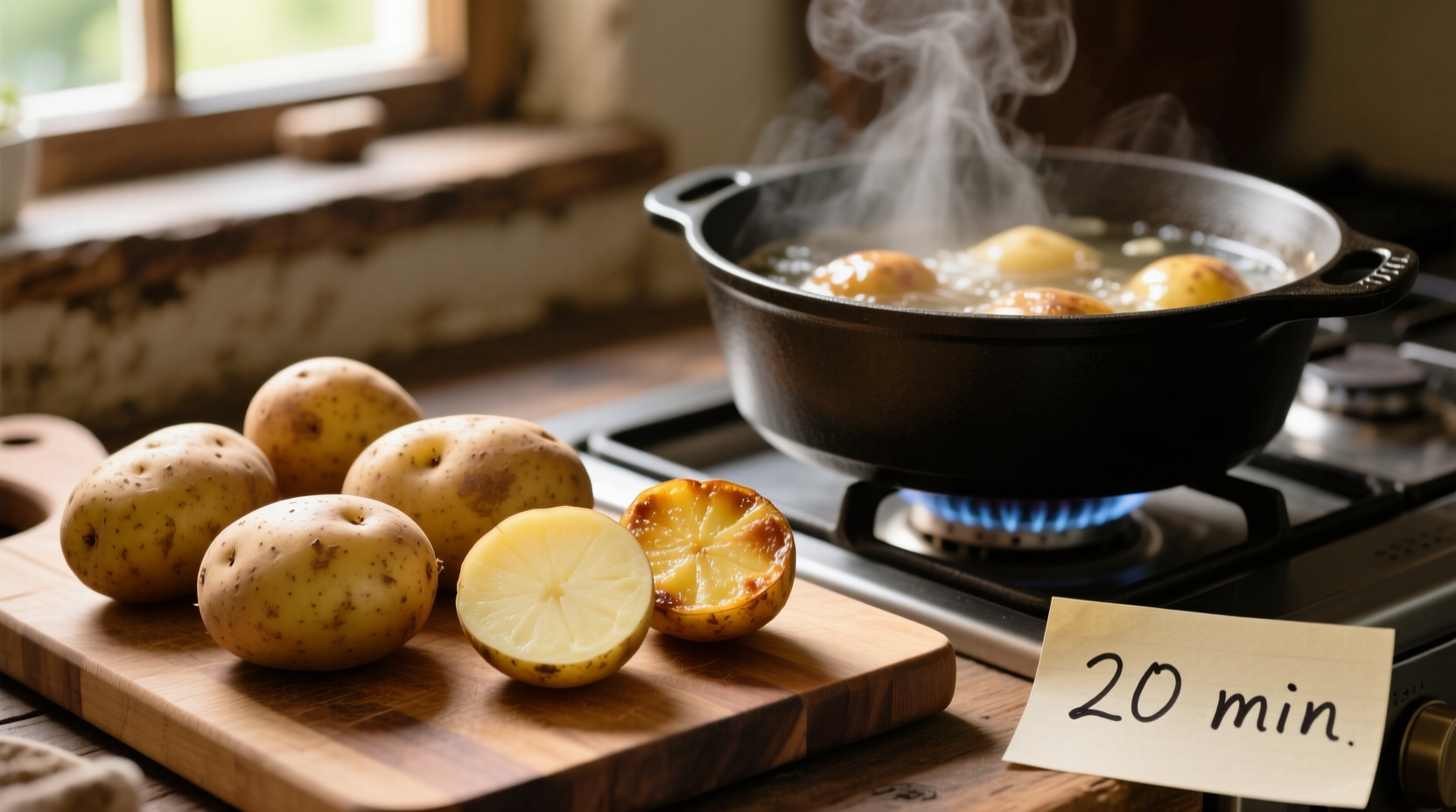Getting potato cooking times right separates decent meals from exceptional ones. Whether you're preparing a weeknight dinner or holiday feast, understanding the precise timing for different potato varieties and cooking methods ensures perfect texture every time—never mushy, never undercooked.
Why Potato Cooking Time Varies
Before diving into specific timings, it's crucial to understand why one-size-fits-all answers don't work. Potatoes aren't created equal, and your cooking method dramatically impacts required time. The starch content alone creates significant differences between varieties:
| Potato Type | Starch Content | Best Cooking Methods | Texture When Cooked |
|---|---|---|---|
| Russet/Baking | High | Baking, Roasting | Fluffy interior |
| Yukon Gold | Medium | Boiling, Mashing | Creamy, smooth |
| Red/Potato Salad | Low | Boiling, Steaming | Firm, holds shape |
| Sweet Potato | Medium-High | Baking, Roasting | Caramelized, tender |
This comparison, based on USDA agricultural research data, explains why identical cooking times produce vastly different results across potato types. High-starch potatoes like Russets absorb more water and break down faster than waxy varieties.
Boiling Potatoes: Precision Timing Guide
Boiling remains the most common method for potato preparation, but timing precision separates professional results from home cooking mistakes. America's Test Kitchen research shows that water temperature and potato-to-water ratio significantly impact cooking time.
For perfect boiled potatoes:
- Diced potatoes (1-inch cubes): 12-15 minutes in rapidly boiling water
- Small whole potatoes: 20-25 minutes (1.5-2 inches in diameter)
- Large whole potatoes: 25-35 minutes (2.5+ inches)
Start timing only after water returns to a full boil. Add 1-2 minutes per 1,000 feet of altitude above sea level—a critical factor often overlooked in standard recipes. The University of Idaho Extension confirms this altitude adjustment prevents undercooked potatoes in mountainous regions.

Baking Potatoes: The Science of Perfect Texture
Baking transforms potatoes through dry heat that creates that signature fluffy interior. Contrary to popular belief, poking holes isn't primarily for steam release—Cornell Food Science research shows it mainly prevents uneven cooking from trapped moisture.
For optimal baked potatoes:
- Medium potatoes (6-8 oz): 45-55 minutes at 400°F
- Large potatoes (10-12 oz): 55-65 minutes at 400°F
- Extra-large potatoes (14+ oz): 65-75 minutes at 400°F
Doneness occurs when internal temperature reaches 205-210°F. Insert a thermometer into the thickest part—this method, recommended by the National Potato Council, eliminates guesswork.
Roasting Potatoes: Crispy Exterior, Tender Interior
Roasting creates that coveted crispy exterior while maintaining tender interiors. The key is understanding the Maillard reaction—the chemical process that creates browning and complex flavors.
Professional timing guidelines:
- Diced (1-inch): 30-35 minutes at 425°F, flipping halfway
- Wedges: 35-40 minutes at 425°F
- Whole baby potatoes: 40-45 minutes at 425°F
Food science research from the Institute of Food Technologists confirms that pre-boiling potatoes for 5-7 minutes before roasting creates superior texture by partially gelatinizing the surface starch.
Alternative Cooking Methods
Steaming Potatoes
Steaming preserves more nutrients than boiling. Timing:
- Diced: 10-12 minutes
- Small whole: 20-25 minutes
- Large whole: 25-30 minutes
Microwave Cooking
For quick preparation:
- One medium potato: 5-7 minutes on high, flipping halfway
- Two medium potatoes: 8-10 minutes
Pressure Cooking
Modern electric pressure cookers dramatically reduce cooking time:
- Diced potatoes: 4-5 minutes at high pressure
- Whole small potatoes: 8-10 minutes
- Natural release for 5 minutes before opening
How to Test for Perfect Doneness
Timing provides a guideline, but these foolproof tests confirm perfect cooking:
- The Fork Test: A fork should slide in with little resistance but not fall apart
- The Squeeze Test (for baked potatoes): Gently squeeze—should yield slightly but maintain shape
- The Knife Test: A thin knife inserted should meet no resistance
- The Float Test (for boiled): Properly cooked diced potatoes will float briefly before sinking
Undercooked potatoes pose food safety concerns—the USDA Food Safety and Inspection Service notes that properly cooked potatoes reach temperatures that eliminate potential pathogens. Never serve potatoes that remain hard or crunchy in the center.
Troubleshooting Common Potato Problems
Undercooked Potatoes
If potatoes remain hard after expected cooking time:
- Return to heat for 5-minute increments
- Add hot water if boiling (never cold, which shocks the potatoes)
- Check your oven temperature with a separate thermometer
Overcooked/Mushy Potatoes
When potatoes become too soft:
- For mashed potatoes: Continue mashing to incorporate air
- For roasted: Make potato croquettes or hash browns
- Prevent future issues by reducing cooking time by 5 minutes
Pro Tips for Perfect Potatoes Every Time
- Always start potatoes in cold water for even boiling
- Season water generously with salt (1 tablespoon per quart)
- Don't overcrowd the pot—use a larger vessel for multiple potatoes
- Let baked potatoes rest 5 minutes before serving for optimal texture
- For roasting, toss potatoes in oil while cold for better crispness
Remember that potato cooking isn't just about time—it's about understanding the science behind the process. By adjusting for potato variety, size, and your specific cooking conditions, you'll achieve consistent results that elevate every meal.











 浙公网安备
33010002000092号
浙公网安备
33010002000092号 浙B2-20120091-4
浙B2-20120091-4